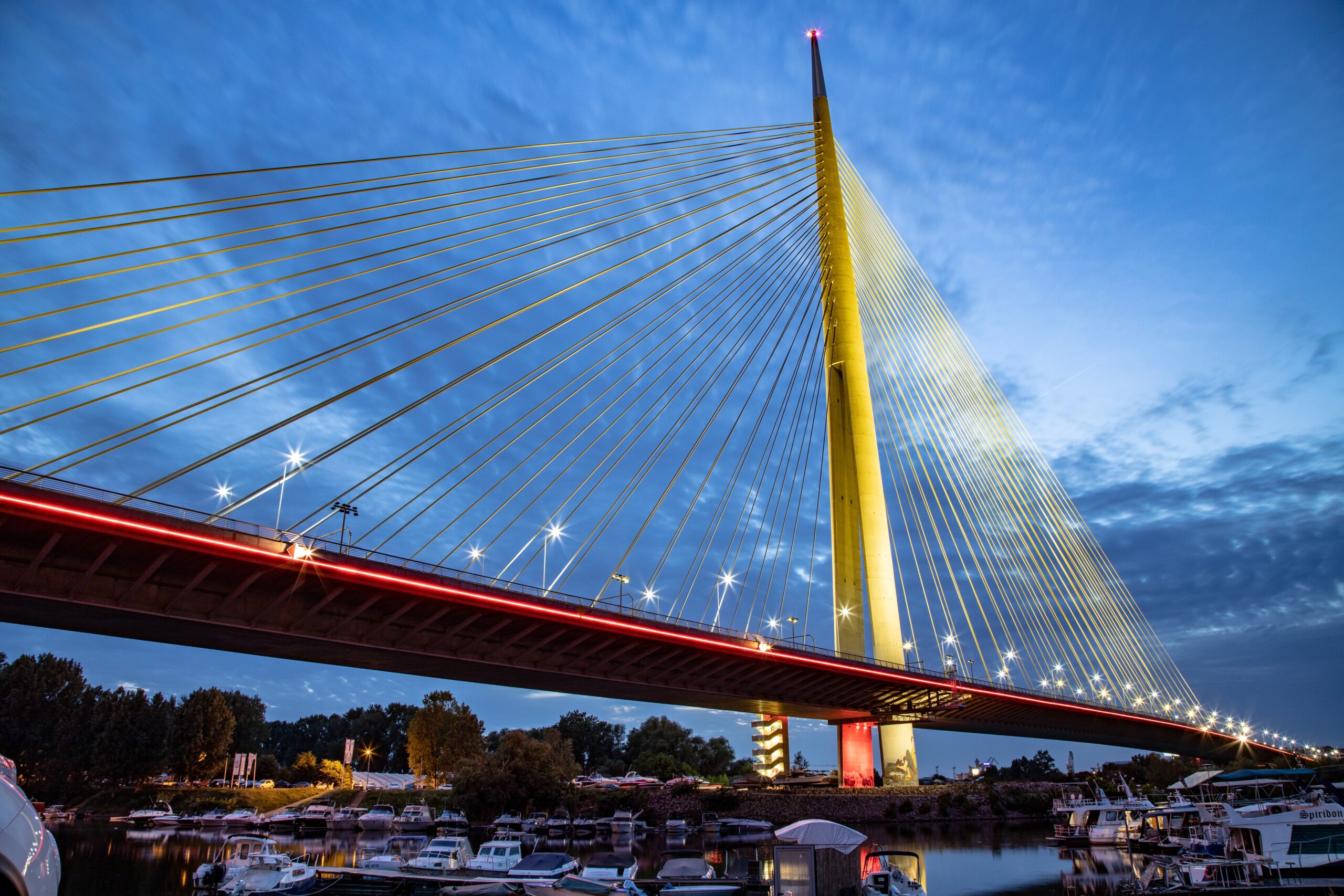About Belgrade
Belgrade is at a regional crossroads. You can reach it by plane, ship, bus or car. It is a capital of Serbia, with some 1,659,440 permanent residents (according to the census from 2011). Belgrade is located at the mouth of the Sava and Danube rivers, a city of tumultuous history, one of the oldest European cities. Its history dates back 7,000 years. The climate in Belgrade is continental moderate, with an average temperature of 11.7℃. The remains of Neolithic cultures were discovered in Belgrade, which means that it was inhabited continuously and that the intensity of settling intensified. Many of today’s residential areas in the vicinity of Belgrade lie on the cultural layers of earlier prehistoric settlements. The territory of the city is divided into seventeen municipalities: Cukarica, Novi Beograd, Palilula, Rakovica, Savski venac, Stari grad, Vozdovac, Vracar, Zemun, Zvezdara, Barajevo, Grocka, Lazarevac, Mladenovac, Obrenovac, Sopot and Surcin. Belgrade is as a monument of nature whose green treasures comprise Kalemegdan, Tasmajdan, Avala, Topcider, Zvezdara, Kosutnjak and Ada Ciganlija. In downtown Belgrade you can also find true natural sanctuaries such as the Botanical Garden and the Great War Island.
Culture and art
Belgrade is the center of culture and art of Serbia. It is Belgrade where our most notable artists create, where over 11000 theatrical performances, exhibitions, concerts, performance events, and other artistic programs are presented and where prominent authors in the world of art are hosted.
Belgrade is the center of the highest state and national institutions of culture and art: Serbian Academy of Arts and Sciences (https://www.sanu.ac.rs/), the National Library of Serbia (https://www.nb.rs/), the National Museum (http://www.narodnimuzej.rs/), the National Theatre (https://www.narodnopozoriste.rs/) and the University of Arts (http://www.arts.bg.ac.rs/).
It is Belgrade where the most significant works of architecture are located, Kalemegdan and Belgrade Fortress, cultural monuments and other immovable cultural treasures, numerous archeological sites with remnants of developed civilization and culture on Belgrade territory from prehistory until this day.
The City of Belgrade is the founder of 30 cultural institutions (12 theatres, 8 institutions for protection of cultural values, 4 libraries, 6 cultural centers and galleries) and at the same time contribute in the implementation of schedules and scheduled attractions of institutions and artistic associations.
The City of Belgrade is the founder of 11 cultural events (FEST, BITEF, BEMUS, BELEF, International Competition of Music Youth, Festival of Documentary and Short film, October Salon, Joy of Europe, Belgrade Book Fair, Sopot Film Festival, Belgrade Jazz Festival), and also the supporter of 69 events in the field of culture performed in Belgrade.
Life and study in Belgrade
Belgrade is considered as a cultural, educational and economic center of this part of the world, which is the main reason why students choose the capital of the Republic of Serbia as a place to study. There are many higher education institutions in Belgrade in all fields of study. By developing science and investing in innovations in the field of education and quality, Belgrade’s higher education institutions attract many students from all over the country, the wider SEE region and the world. Students who choose to study in Belgrade provide great opportunities for training and professional development. Also, students in Belgrade have the opportunity to conduct professional practice in the largest companies operating in the country, and later in employment. Especially at schools of applied studies, internship is one of the important elements of the educational process through which students acquire a professional experience, which is of great importance to them in developing their own careers.
Students have at their disposal the University Library “Svetozar Markovic” and the National Library of Serbia, where they can use a large publication fund, as well as rare editions and paid access to notable international magazines and books.
Also, students in Belgrade have the opportunity to conduct professional practice in the largest companies operating in the country, and later in employment. Especially at schools of applied studies, internship is one of the important elements of the educational process through which students acquire a professional experience, which is of great importance to them in developing their own careers.

